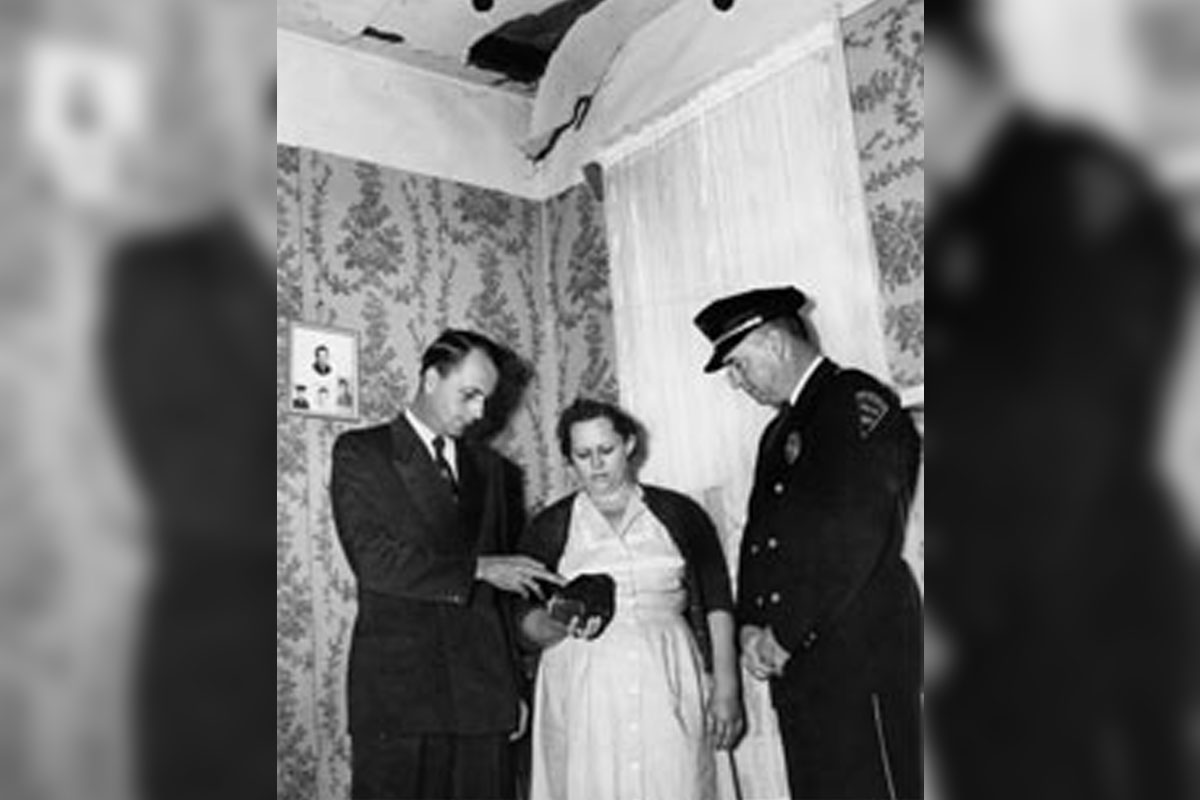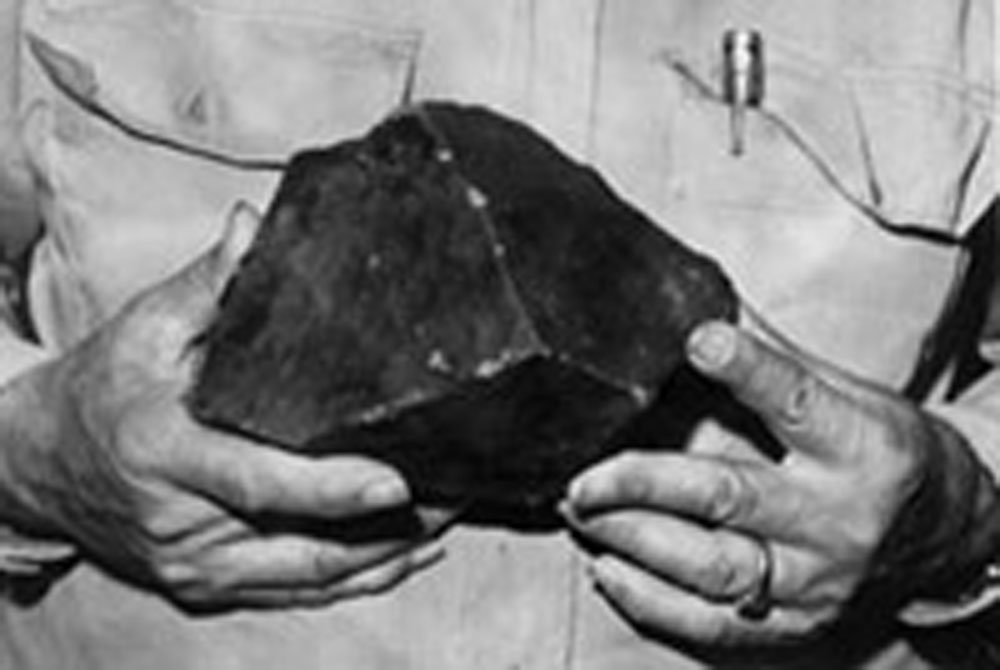How a Meteorite Ruined an Alabama Woman's Afternoon 65 Years Ago

Sixty-five years ago, a few days after Thanksgiving, Ann Hodges was snuggled up on the sofa in her Alabama home when a 4.5-billion-year-old meteorite crashed through the ceiling and struck the left side of her body. Not the best interruption to the holiday season.
The cosmic event, which took place on Nov. 30, 1954, was the first known reported instance of a human being struck by a meteorite and suffering an injury. The softball-size space rock, weighing about 8.5 lbs. (3.8 kilograms), burst through the roof of Hodges' house in Sylacauga at 2:46 p.m. local time, bouncing off a large radio console before striking her and leaving a large, dark bruise.
The meteorite that struck Hodges, who was 31 at the time, turned out to be one-half of a larger rock that split in two as it fell toward Earth. The piece that didn't hit Hodges landed a few miles away and is now in the collections of the Smithsonian's National Museum of Natural History. In 2017, a 10.3-gram piece of the space rock that hit Hodges sold at auction for $7,500.
Video: The Story of Ann Hodges and the Meteorite That Hit Her
Before it ended up leaving a serious welt on Hodges' side, people across eastern Alabama say they saw a bright light in the sky. Reports poured in of a reddish light, and some observers even described a fireball that trailed smoke and left an arc of light in the afternoon sky. After Hodges was struck and the meteorite landed, she and her mother, who was home at the time, tried to figure out what had happened.
Dust filled the house after the crash, but as it settled and they spotted the rock and the enormous bruise on Hodges, the two women called the police and fire department.
Now, as a local geologist was called to the scene to verify what the object was, word quickly spread about what happened. However, the event occurred in 1954, and not everyone was convinced that this strange rock was a meteorite. Some thought it could've been debris from a plane crash, and some thought it could have even come from what was then the Soviet Union.
Get the Space.com Newsletter
Breaking space news, the latest updates on rocket launches, skywatching events and more!
Related: How Often do Meteorites Hit the Earth?

Still, despite a few skeptics, people from all over flocked to Hodges' home to see the woman hit by a space rock, a crowd that Hodges' husband found as he returned from work that night. "We had a little excitement around here today," Ann Hodges told the Associated Press. "I haven’t been able to sleep since I was hit," she said. With all of this commotion around her, Hodges was soon hospitalized, though, despite the massive mark on her side, was not too seriously injured.
"Think of how many people have lived throughout human history," Michael Reynolds, who wrote the book "Falling Stars: A Guide to Meteors and Meteorites," said to National Geographic. "You have a better chance of getting hit by a tornado and a bolt of lightning and a hurricane all at the same time."
Shockingly, Hodges is not the only person to have been hit by a meteorite, but it is still exceptionally rare.
In 2009, a 14-year-old German boy, Gerrit Blank, was hit in the hand by a pea-size meteorite. While he wasn't seriously injured, the rock did leave a scar and gave the boy quite a fright. "When it hit me it knocked me flying and then was still going fast enough to bury itself into the road," Blank told the Telegraph.
- How Often do Meteorites Hit the Earth?
- Meteorite Appears to Nearly Hit Skydiver During Jump (Amazing Video)
- A 'Fireball' 40 Times Brighter Than the Moon Shoots Across Alabama Skies
Follow Chelsea Gohd on Twitter @chelsea_gohd. Follow us on Twitter @Spacedotcom and on Facebook.

Join our Space Forums to keep talking space on the latest missions, night sky and more! And if you have a news tip, correction or comment, let us know at: community@space.com.

Chelsea “Foxanne” Gohd joined Space.com in 2018 and is now a Senior Writer, writing about everything from climate change to planetary science and human spaceflight in both articles and on-camera in videos. With a degree in Public Health and biological sciences, Chelsea has written and worked for institutions including the American Museum of Natural History, Scientific American, Discover Magazine Blog, Astronomy Magazine and Live Science. When not writing, editing or filming something space-y, Chelsea "Foxanne" Gohd is writing music and performing as Foxanne, even launching a song to space in 2021 with Inspiration4. You can follow her on Twitter @chelsea_gohd and @foxannemusic.








